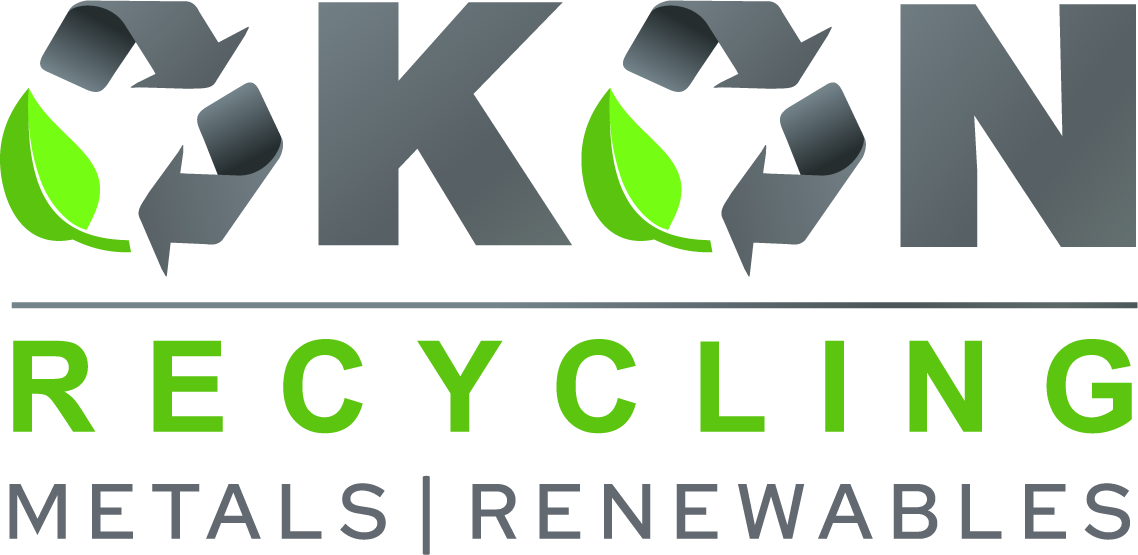5901 Botham Jean Blvd, Dallas, TX 75215
How to Recycle Lead-Acid Batteries Safely and Sustainably
February 11, 2025Did you know that over 99% of lead-acid batteries in the United States are recycled? This impressive statistic underscores the vital importance of recycling these common power sources. It highlights the role of dedicated recyclers like Okon Recycling in making it happen.
But why is it so crucial to recycle lead-acid batteries, and what impact does this have on our environment and economy?
Lead-acid batteries, essential in the automotive and industrial sectors, power countless aspects of our daily lives. From starting our cars to running backup systems, their reliability is unmatched. Yet their widespread use brings environmental responsibilities we can’t ignore.
Through efficient recycling processes—championed by companies like Okon Recycling—we’re not just discarding waste; we’re actively conserving valuable resources and protecting our planet.
Recycling allows us to recover important materials such as lead, plastic, and sulfuric acid, giving them a second life in new applications. Beyond resource recovery, this practice also prevents toxic substances from leaching into soil and water, safeguarding ecosystems and human health alike. And in the bigger picture, recycling lead-acid batteries demonstrates circular economy principles in action, reducing the need for raw material extraction while minimizing energy-intensive mining and refining.
In the following sections, we’ll explore the processes of lead-acid battery recycling, dive into how Okon Recycling helps drive this crucial industry forward.
Understanding the Lead-Acid Battery Recycling Process
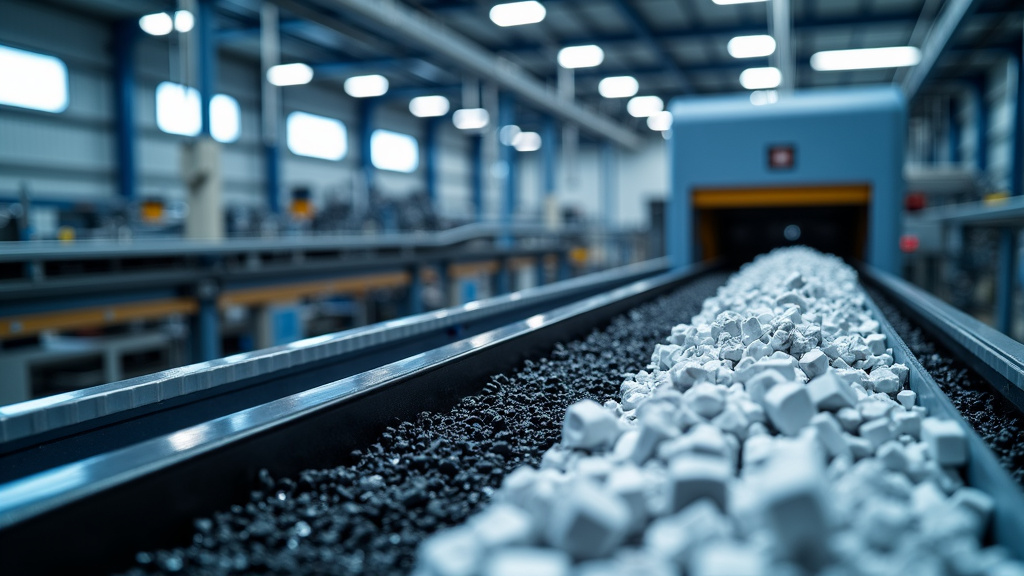
Ever wondered what happens to your old car battery after it’s discarded? The journey of a lead-acid battery doesn’t end when it stops powering your vehicle. Instead, it embarks on a fascinating recycling adventure, transforming from spent energy source to valuable raw materials. Let’s explore the intricate process that gives these batteries a second life.
Collection: The First Step Towards Sustainability
The recycling journey begins with collection. Auto repair shops, recycling centers, and some retailers serve as gathering points for used batteries. It’s a crucial stage that prevents these potentially harmful components from ending up in landfills.
Did you know? According to the Environmental Protection Agency, lead-acid batteries boast an impressive 99% recycling rate in the United States. This makes them one of the most recycled consumer products in the country!
Once collected, batteries are transported to specialized recycling facilities, equipped with state-of-the-art technology to handle the complex recycling process safely and efficiently.
Breaking It Down: The Hammer Mill Stage
At the recycling facility, batteries undergo a process aptly named ‘breaking’. Don’t let the simple term fool you – it’s a sophisticated operation using a machine called a hammer mill. This device smashes the batteries into small pieces, separating the various components.
The hammer mill’s rotating hammers pulverize the battery casings, exposing the internal components. This stage is crucial as it prepares the materials for further separation and purification. Safety measures are stringent here, as the process can release potentially harmful dust and fumes.
Separation: Sorting the Valuable from the Waste
Next comes the separation stage, where the real magic happens. The broken-down battery components are sorted into three main categories: lead, plastic, and electrolyte (sulfuric acid). Each of these materials follows a unique recycling path.
A fascinating process called hydro-separation is often employed at this stage. The battery pieces are submerged in a large tank of water. Due to differences in density, the heavier lead sinks to the bottom while the lighter plastic floats to the top. It’s a simple yet effective method that echoes grade school science experiments!
Purification: Refining for Reuse
The final stage in the recycling process is purification. Here, each separated component undergoes specific treatments to prepare it for reuse. Let’s break it down:
Lead undergoes a smelting process. It’s melted down in furnaces, removing impurities and casting it into ingots. These lead ingots become the building blocks for new batteries. The plastic casings are cleaned, melted, and formed into pellets, ready to be molded into new battery cases.
But what about the sulfuric acid? It’s neutralized and converted into sodium sulfate, a compound used in detergents, glass, and textile manufacturing. Talk about a complete transformation!
The efficiency of this recycling process is truly remarkable. Nearly 100% of a lead-acid battery can be recycled and reused, creating a closed-loop system that conserves resources and reduces environmental impact.
As we move towards a more sustainable future, understanding processes like lead-acid battery recycling becomes increasingly important. It’s a shining example of how innovative recycling techniques can turn waste into valuable resources, protecting our environment while supporting industry needs.
Next time you start your car, remember the incredible journey its battery will one day take. From powering your vehicle to being broken down, separated, purified, and reborn as a new battery – it’s a cycle of sustainability that keeps our world moving forward.
| Stage | Description |
| Collection | Gathering used batteries from auto repair shops, recycling centers, and retailers. |
| Breaking | Batteries are broken into smaller pieces using a hammer mill. |
| Separation | Components are separated via hydro-separation, where lead sinks and plastic floats. |
| Purification | Lead is melted and impurities are removed; plastic is cleaned and melted; sulfuric acid is neutralized and reused. |
| Output | Recycled materials include lead ingots, plastic pellets, and sodium sulfate. |
Environmental Benefits of Recycling Lead-Acid Batteries
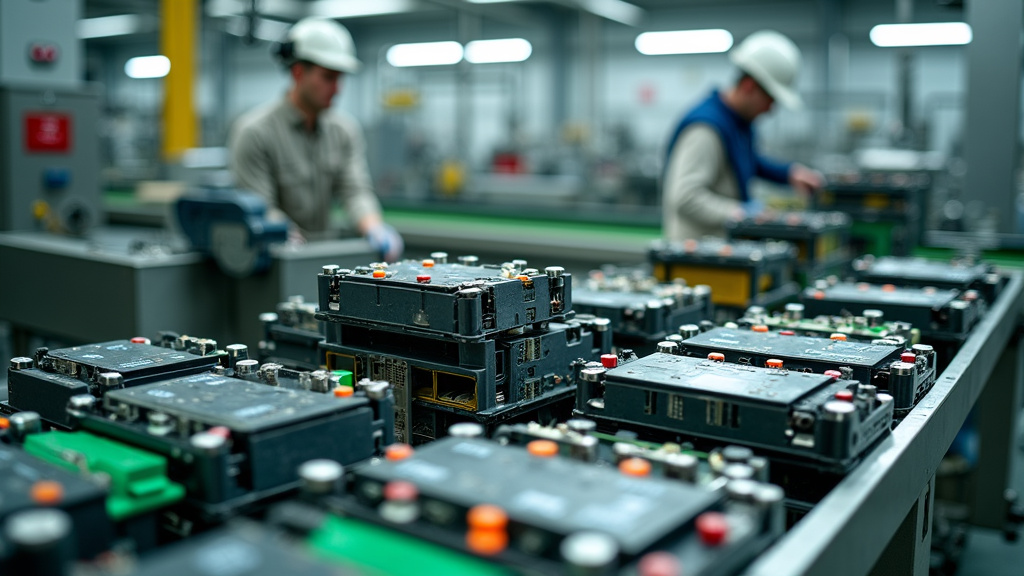
Lead-acid batteries, common in vehicles and backup power systems, pose significant environmental risks if not properly managed. However, recycling them offers hope for a greener future. Here are the compelling environmental benefits of recycling these devices.
Mitigating Environmental Hazards
The primary environmental benefit of recycling lead-acid batteries is preventing toxic substances from leaching into ecosystems. According to the Environmental Protection Agency (EPA), improper disposal can lead to lead and sulfuric acid contaminating soil and water sources.
Recycling creates a barrier between hazardous materials and our environment, significantly reducing pollution risk and safeguarding wildlife and human health. It’s crucial for maintaining ecosystem balance.
The Battery Council International reports that lead-acid batteries have a recycling rate of over 99% in the United States, underscoring the industry’s commitment to environmental stewardship and highlighting effective recycling programs.
Conserving Natural Resources
Recycling lead-acid batteries exemplifies resource conservation. The process allows for the recovery and reuse of valuable materials, particularly lead, which makes up a significant portion of these batteries.
By recapturing lead through recycling, we reduce the need for new lead mining operations. This effort conserves natural resources and minimizes the environmental impact of mining, such as habitat destruction and energy consumption.
The International Lead Association estimates that recycled lead accounts for over 85% of lead used in new battery production, exemplifying sustainable manufacturing practices.
Pollution Reduction and Energy Savings
Recycling lead-acid batteries contributes significantly to pollution reduction. By diverting these batteries from landfills, we prevent the release of toxic chemicals into the air, soil, and water.
Moreover, recycling lead requires considerably less energy compared to extracting and refining new lead from ore. The U.S. Department of Energy reports that recycling lead uses 25% less energy than primary production, resulting in lower greenhouse gas emissions and a smaller carbon footprint.
Decreasing Landfill Usage
One of the most tangible benefits of recycling lead-acid batteries is reducing landfill usage. These batteries are bulky and, if not recycled, would consume significant landfill space. Recycling alleviates pressure on waste management systems.
The EPA emphasizes that recycling lead-acid batteries helps conserve landfill space for non-recyclable waste, contributing to more efficient waste management practices. This is crucial as we face increasing waste generation.
Contributing to a Healthier Planet
The cumulative effect of recycling lead-acid batteries is a healthier planet. By preventing pollution, conserving resources, and reducing waste, we make significant strides towards environmental sustainability.
These recycling efforts align with global initiatives to combat climate change and protect biodiversity. They show how responsible waste management can make a substantial difference in our environmental footprint.
As consumers, we play a vital role in this process. By ensuring our used lead-acid batteries are properly recycled, we contribute to these environmental benefits and help create a more sustainable future.
| Material | Energy Savings | Recycling Rate |
|---|---|---|
| Aluminum | 95% | 98% in Norway |
| Steel | 60% | Varies |
| Plastic | 76% | 54% in South Korea |
| Paper | 60% | 74% in Finland |
| Glass | 30% | 90% in some regions |
Effective Steps for Recycling Lead-Acid Batteries
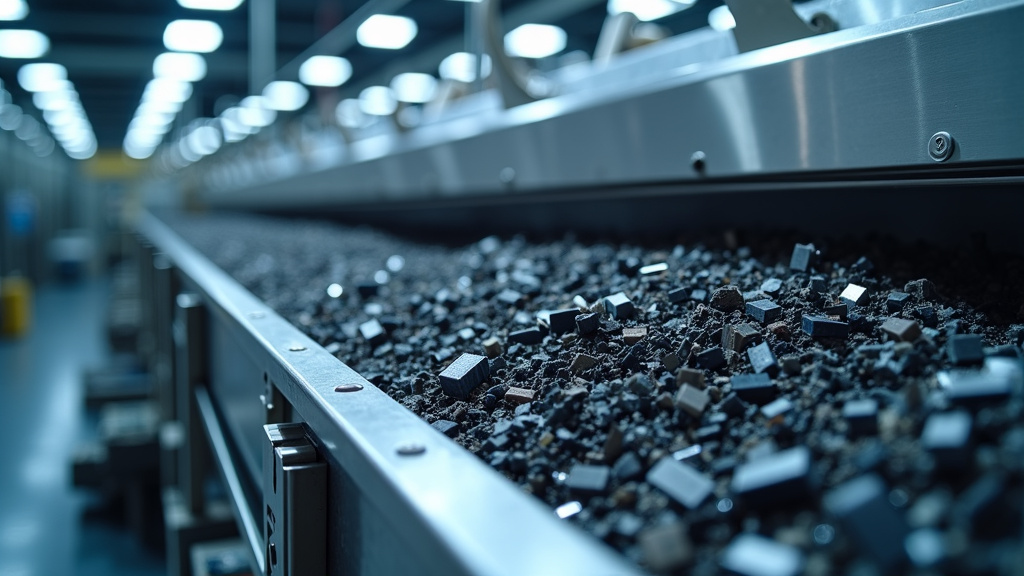
Lead-acid batteries, common in vehicles and industrial applications, pose significant environmental challenges if improperly disposed of. However, with the right approach, these power cells can be recycled efficiently, recovering valuable materials and reducing ecological risks. Let’s explore the crucial steps in this process, from collection to resource recovery.
Safe Collection and Transportation
The journey of recycling lead-acid batteries begins well before they reach processing facilities. Proper collection and transportation are essential to prevent environmental contamination and ensure worker safety. Battery retailers, auto shops, and dedicated recycling centers often serve as collection points, creating a network for responsible disposal.
Safety during transport is crucial. Batteries must be secured upright to prevent acid leaks, and terminals should be insulated to avoid short circuits. Specialized containers designed to withstand the corrosive nature of battery contents are necessary. These precautions are not just good practice—they’re often mandated by strict battery transport regulations.
Ever wonder why your local auto parts store is so meticulous about battery returns? It’s not just about customer service; it’s about compliance and environmental stewardship. This attention to detail sets the stage for successful recycling downstream.
Breaking and Material Separation
Once batteries arrive at recycling facilities, the real work begins. The process of breaking down batteries and separating their components involves a precise combination of mechanical and chemical processes. Modern recycling plants use sophisticated techniques to maximize resource recovery while minimizing environmental impact.
Here’s a glimpse into the separation process:
- Batteries are crushed in specialized mills, reducing them to manageable fragments.
- A series of screens and filters separate plastic casings from lead components and electrolyte solution.
- Hydrometallurgical processes extract and purify lead from battery paste.
- Advanced flotation techniques isolate different plastic types for recycling.
- Sulfuric acid is neutralized and often converted into useful byproducts.
This meticulous separation isn’t just about recycling—it’s about resource recovery on an industrial scale. Every gram of lead, every ounce of plastic, and even the acid itself find new life through this process.
Purification and Resource Recovery
The heart of lead-acid battery recycling lies in its purification processes. Here, cutting-edge technology meets environmental responsibility. Smelting furnaces, operating at temperatures exceeding 1,000°C, transform recovered lead into high-purity ingots. Electrolytic refining further purifies the metal, ensuring it meets stringent quality standards for reuse in new batteries.
But lead isn’t the only material these old batteries hold. Plastics, once cleaned and sorted, become raw material for new products. Even the sulfuric acid, neutralized and treated, finds applications in industries ranging from textile manufacturing to water treatment.
The efficiency of modern recycling is impressive. Did you know that up to 99% of a lead-acid battery can be recycled?
| Recycling Rate | 99% |
| Lead Recovered | Up to 100% |
| Environmental Impact | Less CO2 emission (up to 99%) |
This isn’t just recycling; it’s a masterclass in circular economy principles, turning what was once considered waste into valuable resources.
Sustainability and Compliance
Effective lead-acid battery recycling isn’t just about technical processes—it’s about creating a sustainable ecosystem that benefits industry, environment, and society. Recyclers must navigate a complex landscape of regulations, balancing economic viability with environmental responsibility.
Key aspects of sustainable battery recycling include:
- Implementing rigorous environmental management systems
- Investing in continuous improvement of recycling technologies
- Educating consumers and businesses about proper battery disposal
- Collaborating with manufacturers to design batteries for easier recycling
- Ensuring transparent reporting of recycling rates and environmental impacts
By adhering to these principles, recyclers not only comply with regulations but often exceed them, setting new standards for the industry. It’s a testament to how environmental stewardship and business success can go hand in hand.
As we look to the future, the recycling of lead-acid batteries stands as a shining example of what’s possible when innovation, responsibility, and commitment converge. It’s not just about managing waste—it’s about reimagining our relationship with resources, one battery at a time.
Conclusion: Advancing Lead-Acid Battery Recycling
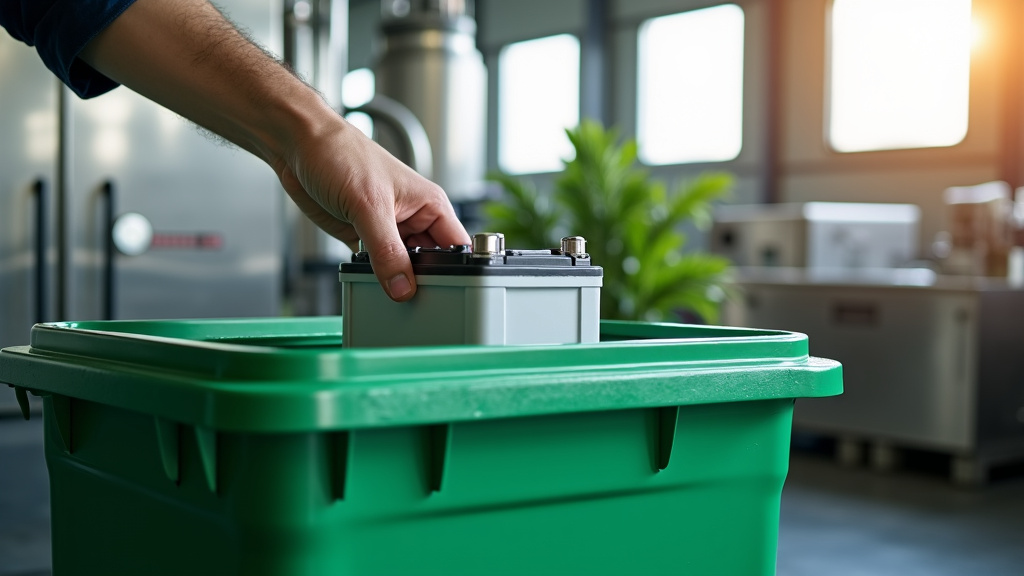
Recycling lead-acid batteries is more than an environmental necessity—it’s a vital step toward a more sustainable future. By properly recycling these batteries, we conserve precious resources, prevent pollution, and foster economic growth.
Advanced recycling techniques recover valuable materials such as lead, plastic, and sulfuric acid, breathing new life into them across various industries. This circular approach spares finite resources and cuts back on environmentally damaging mining activities.
Companies like Okon Recycling are at the forefront of this revolution, employing innovative methods to maximize efficiency and minimize environmental impact. Their success proves that with the right technology and dedication, what once was waste can become a valuable asset.
The broader benefits of recycling lead-acid batteries extend to our communities, where preventing toxic materials from seeping into soil and water helps safeguard both public health and local ecosystems. Moreover, robust recycling programs create jobs that invigorate local economies—evidence that economic development and environmental stewardship can indeed go hand in hand.
Whether you’re a consumer with an old car battery or a business managing industrial power systems, your decision to recycle responsibly is pivotal. Every recycled battery reduces pollution, conserves critical resources, and supports a healthier planet for future generations.
Ready to take action? Contact Okon Recycling today at 214-426-6566 to join the movement toward a cleaner, greener tomorrow.
